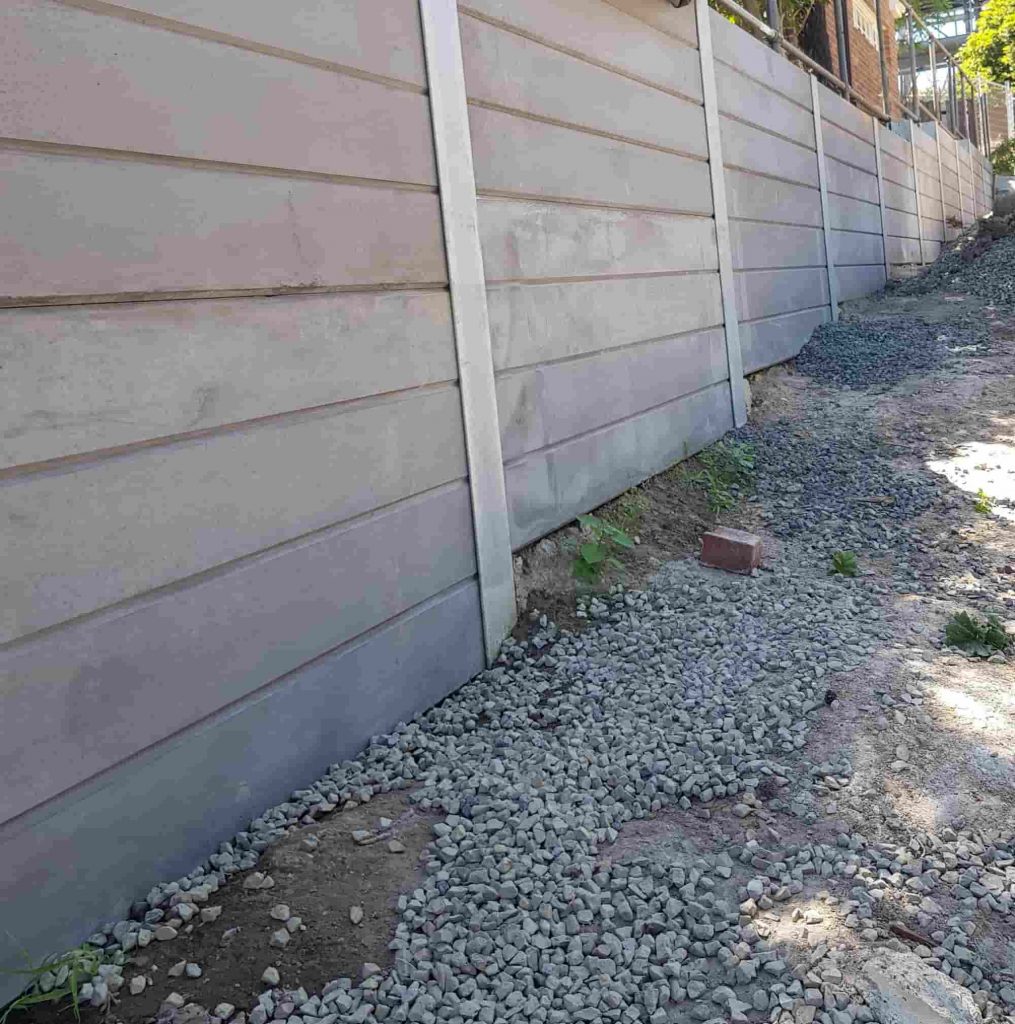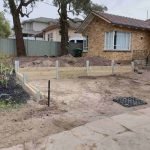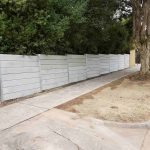Introduction
When it pertains to landscaping and building and construction, among the most important elements to think about is the kind of soil on your property. Understanding soil types with your retaining wall installer's help can make a considerable difference in ensuring the stability and durability of your retaining wall. Keeping walls serve not only as aesthetic enhancements but likewise play an important function in managing soil disintegration and offering assistance in sloped areas. This guide will dive deep into the complexities of soil types, their qualities, and how they engage with different products like timber sleepers, concrete sleepers, and H beams
Understanding Soil Types with Your Retaining Wall Installer's Help
What Are Soil Types?
Soil types are classified based on their physical and chemical homes. They can be broadly categorized into sandy, clayey, silty, fertile, and peaty soils. Each type has its own distinct attributes that impact drainage, compaction, and general stability.

Why Is Soil Type Important for Maintaining Walls?
The kind of soil straight affects the style and setup of retaining walls:
- Drainage: Some soils retain water while others permit it to drain pipes quickly. Weight: Various soil types have varying weights that can exert pressures on the keeping wall. Erosion: The susceptibility to disintegration varies with each soil type.
Common Soil Types Explained
Sandy Soil
Sandy soil includes large particles that produce big spaces in between them. It drains pipes quickly however might not hold nutrients well.
Pros:
- Excellent drainage Easy to work with
Cons:
- Low nutrient retention Susceptible to erosion
Clayey Soil
Clayey soil includes very fine particles that are securely compacted. It retains water but drains poorly.
https://pastelink.net/grskq5phPros:
- High nutrient retention Good for certain plant growth
Cons:
- Poor drainage Can expand or shrink drastically with moisture changes
Silty Soil
Silty soil is comprised of medium-sized particles that are smooth to the touch. It holds moisture much better than sandy soil but drains poorly.
Pros:
- Good nutrient retention Holds moisture well
Cons:
- Compacts easily Susceptible to disintegration when wet
Loamy Soil
Loamy soil is a mix of sand, silt, and clay. It is often considered the perfect garden soil due to its balance of drainage and nutrient retention.
Pros:
- Excellent drainage Nutrient-rich
Cons:
- Can be pricey if acquired
Peaty Soil
Peaty soil consists of a great deal of organic matter, making it dark in color. It's generally found in damp areas.
Pros:
- Rich in nutrients Great for specific plants
Cons:
- Poor drainage Can be acidic
Choosing the Right Product for Your Maintaining Wall
Timber Sleepers vs. Concrete Sleepers
When structure a retaining wall, you have a number of product options - timber sleepers or concrete sleepers Each has its benefits depending upon your particular needs.
Timber Sleepers
Timber sleepers offer a natural appearance that mixes well with gardens.
Advantages:
Aesthetic appeal. Easier to manage during installation. Cost-effective option.Disadvantages:
Prone to rot over time. May need more maintenance.Concrete Sleepers
Concrete sleepers provide sturdiness and strength for bigger walls or walls developed on unstable soil conditions.

Advantages:
Long-lasting. Requires less maintenance. Suitable for different designs.Disadvantages:
More pricey than timber. Heavier, needing more labor during installation.H Beams as Structural Support
For vertical loads or additional structural support in your retaining wall system, utilizing H beams can be beneficial.
Benefits of H Beams:
Provide additional strength against lateral earth pressure. Ideal for high slopes where extra reinforcement is necessary. Versatile use in combination with both wood or concrete systems.Soil Analysis Before Installation
Why Conduct a Soil Test?
Conducting a soil test before installing your retaining wall is important due to the fact that it helps recognize:
Soil composition (sand, silt, clay). pH levels affecting plant growth. Drainage capabilities which affect wall design.How to Conduct a Soil Test?
You can either employ professionals or do it yourself:
Collect samples from numerous places at various depths. Use an at-home package or send samples to a lab for in-depth analysis. Review results carefully; consult your installer for analysis associated to construction plans.The Function of Your Retaining Wall Installer
Choosing a Professional Installer
Hiring a professional installer makes sure that all elements-- from soil testing to wall building-- are managed expertly.
What Makes an Installer 'Professional'?
Experience in numerous kinds of setups (timber sleeper vs concrete sleeper). Knowledgeable about regional guidelines and constructing codes. Strong portfolio showcasing previous projects.Questions to Ask Your Installer
Before committing:
What is your experience with different soil types? Can you offer references? What products do you suggest based on my particular situation?Design Considerations Based upon Soil Type
Factors Affecting Design Choices
When designing your retaining wall, think about these factors based upon your particular soil type:
1. Height & & Load Bearing Capacity
Taller walls need tougher products like concrete sleepers or H beams for structural integrity in clayey soils susceptible to growth under moisture changes.
2. Drainage Solutions
Adding perforated pipelines behind the wall can assist manage water pooling behind walls built on sandy soils where quick drain is possible but requires careful preparing around stability concerns linked with heavy rains affecting fertile soils too!
Construction Process Overview
Steps Involved in Building a Keeping Wall
Building any sort of retaining wall consists of several steps:
1. Preliminary Consultation
Talk about goals & & issues regarding landscape features needing assistance together with preferred styles/materials such as timber/concrete alternatives readily available within budget plan constraints!
2. Website Preparation
Clear location & & make sure proper grading towards drain outlets; mark out borders precisely before digging starts!

3. Structure Laying
A solid structure supports long-lasting efficiency-- specifically important when utilizing much heavier materials like H beams!
4. Wall Construction
Install chosen product (timber/concrete) according to create requirements; consist of required reinforcements if needed!
5. Last Touches
Add any finishing touches wanted-- like caps atop concrete walls! Don't forget landscaping around base either!
FAQs about Maintaining Walls and Soil Types
Q1: How do I know what type of soil I have?
A1: A professional service can conduct a comprehensive analysis; additionally, DIY packages are offered online for standard testing!
Q2: Can I install my own maintaining wall?
A2: While possible if experienced enough-- working with professionals typically saves headaches later on down road by making sure whatever meets regional codes!
Q3: How long will my retaining wall last?
A3: Depends heavily on materials used; wood may last 10-- 20 years while concrete might last over 50 years if appropriately maintained!
Q4: What occurs if my wall collapses?
A4: Routine examinations help identify early indication before collapse occurs; seek advice from engineers instantly upon observing any shifts/sinking!
Q5: Is plant life practical near maintaining walls?
A5: Yes! Specific plants can stabilize surrounding earth while also enhancing aesthetics however need to choose wisely based on root depth & & spreading tendencies!
Q6: Do I need authorizations before building?
A6: Typically yes-- but inspect local policies initially considering that requirements differ extensively across municipalities relating to height/location constraints etc!
Conclusion
In summary, comprehending numerous elements related particularly towards "Comprehending Soil Types With Your Retaining Wall Installer's Assistance" plays an essential function when embarking upon this journey! From understanding how different materials perform versus distinct ground conditions through analyzing underlying earth structure prior engaging specialists-- each aspect contributes towards accomplishing effective outcomes! Ultimately investing time in advance settles down roadway yielding aesthetically pleasing yet structurally sound services tailored precisely according respective website difficulties encountered throughout process ahead!